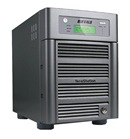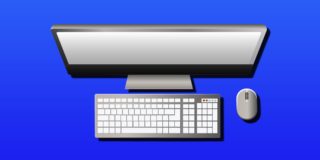How To: Build Your Own Network Attached Storage
 There are two facts which are pretty much indisputable:
There are two facts which are pretty much indisputable:
- Most of us are working with not only more files, but much larger files, than we were only a few years ago.
- Most of us have an old PC which we don’t really have a use for.
Solution: You can use that old PC as network storage. It is easy to do.
It is called Network Attached Storage, or simply NAS. It basically means a storage device which is connected directly to your network so that you can store files to it from any machine on your network. You can buy NAS if you would like. Several vendors offer NAS solutions, such as Mirra, Netgear and others. You can also purchase hard drive enclosures which act as network devices. But, you can also use any old desktop PC as your own, home brew NAS.
If you want to use an old PC as NAS, keep in mind that it does not need to be very powerful. When acting as simply a storage medium, the computer does not need to have very much horsepower. If it can run Windows XP or a basic distro of Linux, it is powerful enough to act as NAS. Even much older Pentium 3 based systems can work as NAS. 256 MB of RAM is probably enough memory for you, too. What is more important than anything else is size of the hard drive as that will determine how much capacity this machine will have as a storage device on your network.
We’re going to assume Windows XP here. A full copy of Windows XP is indeed overkill for NAS, however people are very familiar with Windows XP which brings convenience to the process. You can use a Linux distro or even more stripped down software to power your NAS box, but you need to know how to use it. So, to set up a Windows XP based NAS, do the following:
- If you need to upgrade the hard drive to something larger, do that now. With drives as cheap as they are today, get as large as you can afford. Install the hard drive just as you would any other hard drive.
- Format the hard drive and re-install Windows XP. It is best to have a clean install of Windows just to clean out any trash which might be there from before.
- Time to choose and install a backup program. There are TONS of them out there to choose from. A good one is Cobian Backup. It is free and does not use any proprietary formats, meaning you can restore a file by simply moving it back to its original location. Install Cobian to the NAS computer this way everything is centralized on that machine. It will access the files on the client machines over the network.
- Make sure file sharing is enabled on your network.
- Go to each folder you want to be backed up and enable file sharing on that folder. I would recommend you do this on a folder-by-folder basis. Yes, you can choose to make your entire drive sharable on the client PC, however that potentially opens up that machine to some big security problems.
- Set up the backup task in Cobian. It is very easy to do. Enter a name for the task, select the files you want to back up, the back up destination, schedule the back up so it will run at certain times, select whether you want encryption or compression, etc.
- Repeat step 6 for any set of files or folders you wish to back up.
What About Redundancy?
There are a few different ways to go about creating redundancy for your backup.
- Use RAID. This will raise your hardware requirements, but using RAID will automatically mirror your data to a second hard drive.
- Use Cobian to back up the backup. You can set up Cobian to simply execute another backup task on itself, backing up your backup files to a second hard drive internally on the NAS machine.
- Use FTP. Cobian does support FTP transfers, so you can FTP your backups to a remote server. You might want to consider having Cobian encrypt any files it sends to an FTP server.
Keep The Cloud in Mind, Too
This article shows you a down-and-dirty way to set up NAS on your local home network. But, keep in mind that many are turning to the Internet to take care of automatic, redundant backup of their data.
Services like Mozy, X Drive, IBackup and Carbonite all offer very convenient ways to take care of your data backup. Once set up, these services are on auto-pilot. And it doesn’t get any more redundant than a remote service. It is off site and one a completely different system.

















4 thoughts on “How To: Build Your Own Network Attached Storage”